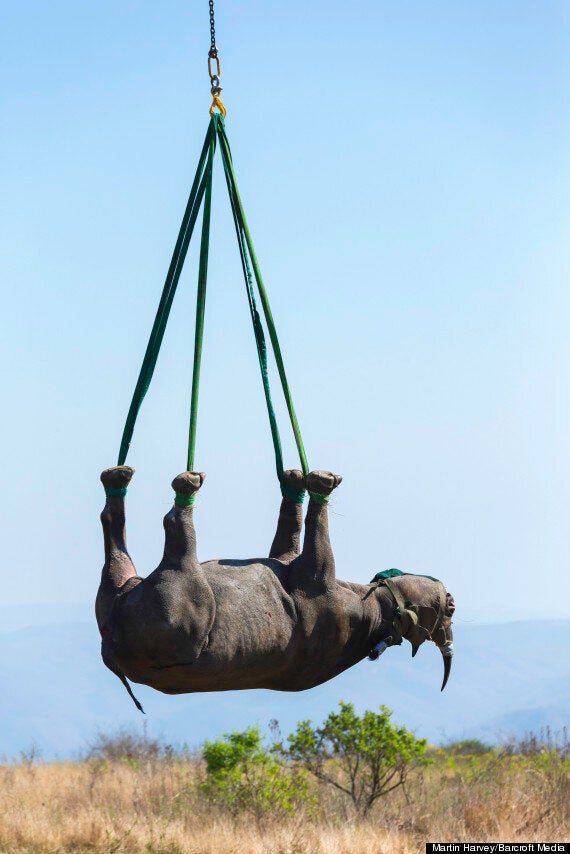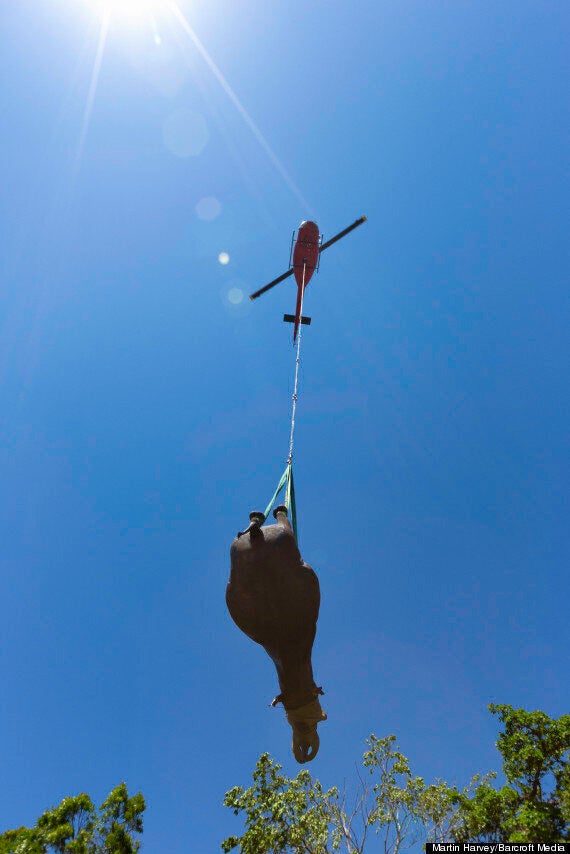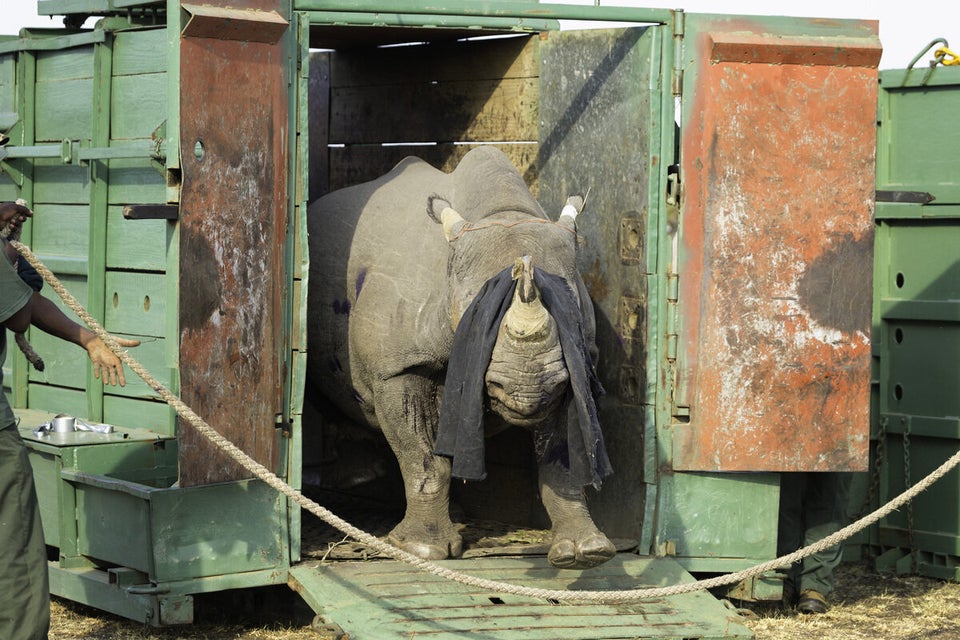Nope, you’re not seeing things. That IS a rare black rhino dangling hundreds of feet in the air from a helicopter.
But fear not, it’s not some horrendous Farmville/ Goodfellas mash-up, rather it’s part of a conservation drive to encourage more breeding.
And while the sight of this weighty mammal strapped by its ankles might seem strange - it is considered safer as the animal spends less time under anaesthetic than it would on the ground.

This is considered to be a safer way to transport the animals
This individual is the latest of about 140 black rhinos that have been translocated to new homes since the beginning of the WWF’s Black Rhino Range Expansion Project.
The relocation was one of 10 which took place in the KwaZulu-Natal region of eastern South Africa.
Project leader Dr Jacques Flamand said: "We used to transport rhinos by lorry over very difficult tracks, or airlifted in a net. This new procedure has proved to be a safer bet.
"As a vet, this is my method of choice because it is quick and harmless to the rhinos, which is always our main concern in these operations.
“All the rhinos have started eating immediately after release – a sure sign that they were not in distress."
Helicopter translocations, which were pioneered in Namibia, usually take less than ten minutes and are used to relocate rhino's from inaccessible areas.
The purpose of the project, which is in its tenth year, is to increase numbers by providing the animals with more territory to breed on.

The translocations were carried out to encourage more breeding
Seven of the new breeding sites are in KwaZulu-Natal and two are further north in Limpopo.
In the 1960s, an estimated 65,000 black rhino found across Africa but poaching decimated their numbers to just 2,000 in the early Nineties.
Conservation efforts have now doubled numbers to an estimate 4,000 - but poaching remains the biggest threat to their survival.
To date over 40 calves have been born on sites ran by the Black Rhino Range Expansion Project.
Across the 160,000 hectares of secure sites, only three black rhinos have been poached.
As well as creating new populations, the project supports security of black rhino source populations by providing equipment for anti-poaching work.
They also pay for helicopter hours when vets go out to treat snared rhinos, paying for rhino monitors and buying light-aircraft for aerial surveillance.
Dr Flamand added: “Translocating rhinos from our major parks relieves pressure on those parks and allows more rapid growth of those populations as well.
“There are two parts to rhino conservation: one is trying to keep rhinos safe – which is very difficult under current circumstances – and the other is managing for maximum population growth. Through our project we try to help with both aspects.”
